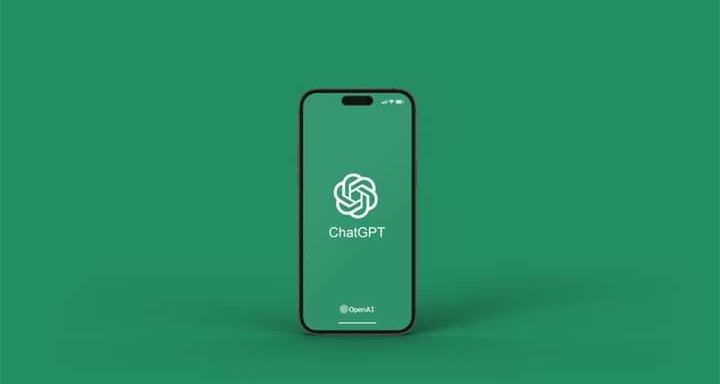Harness ChatGPT to Make Better Decisions
Struggling to make the right call? Learn how ChatGPT’s advanced language processing can analyze options, weigh pros and cons, and guide you toward sound decisions.

When ChatGPT was asked the same question, he gave an excellent answer. The answer was: “Yes. I can help you make various business management decisions by providing information, examples, analysis and perspectives. You can use the information I provide to make better decisions.”
However, ChatGPT then acknowledges its limitations: “However, one thing to note is that my advice and suggestions are based on various data and algorithm-based analyses. As a human being, you have to take the final decision based on your own experience, knowledge and circumstances.”
It turns out that ChatGPT is not only intelligent, but also has qualities like modesty and honesty. All these reasons make ChatGPT a powerful tool for business decision-making.
ChatGPT not only answers our queries but also helps us in every step of making important business management decisions.
There are 3 steps involved in making an effective decision on any matter. First we have to decide what we want to decide and what purpose we want to achieve with this decision.
In this case, what will be our goals, values and what will we prioritize, these things need to be fixed in advance.
This will allow us to accurately diagnose our problem and understand which decision framework can be used to solve it.
The second step is to find a solution as well as multiple alternative solutions. We have to think about what alternative solutions we can find. Our objective here is to find as many options as possible.
Sometimes we put the most emphasis on a solution. We should refrain from such tendency. When we have identified a sufficient number of alternative solutions, we are ready to make a fruitful decision.
ChatGPT can play an important role in all these 3 stages of decision making if used efficiently. By interacting with this intelligent AI system, you can collect enough information, which will help you in decision making.
Let’s see an example. Think chatgpt was asked, “What mistakes do large and medium companies that use mechanical engineering make while expanding their market?”
The question can be put another way, “What does it take to successfully expand a business?”
ChatGPT does not make any binding rules for us, following which we can choose the best decision. Rather, ChatGPT can help us understand whether there is something wrong with our assumptions or whether we are biased.
This is an intelligent fellow who has also studied the writings of psychologists like Daniel Kahneman and Amos Tversky in depth. So one way to make an unbiased decision is to use chatgpt in a smart way.
A language model like chatgpty can come in handy when we get stuck or don’t have any new ideas. When chatbots present more solutions in front of us, we realize how limited our thinking was.
Let’s say the chairman of an American company asks ChatGPT, “How can we reduce our dependence on China in the supply chain and diversify the supply chain?” No official of that organization ever faced such a question. However, ChatGPT will generate a simple answer to this question. ChatGPT will not simply say that the supply chain should be moved to Vietnam or some other country instead of China. Rather, it will create a fundamental solution for an organization in the light of what strategies other companies have adopted in such a situation.
This is because ChatGPT can create a solution using whatever information is available on the internet about an industry and company.
Thus ChatGPT helps us select goals and preferences, assess situations, and select decision-making frameworks. But the real issue here is how to talk to chatgpt. With the right questions and meaningful discussions, it is possible to get a complete understanding of any decision from ChatGPT.
As mentioned earlier, by using chatgpt we can find out how others are working to solve similar problems. Let’s give an example. Let’s say you give chatgpt a question or prompt: “Hi chatgpt. I am the head of a medium-sized engineering machinery manufacturing company located in such and such a place in (this) country. I want to hire new talented staff, especially engineers for the company but can’t find qualified candidates. What could be the reason for this? What measures are other companies like mine taking to address this staffing crisis?”
The fact is, chatGPT has become a smart companion for conversation and work. It’s not just that ChatGPT structures our decision-making or evaluates many solutions. Rather, ChatGPT allows us to look at the same topic in many ways.
Working with a large language model has many advantages over humans. As such, this model does not involve any self-interest when giving advice. The Large Language Model does not work to please the boss above or to think about one’s own career.
ChatGPT also does not involve groupthink (agreeing to save everyone’s mind) or office politics. And best of all, using ChatGPT costs a lot less than hiring an outside consultant.
So even small companies can use ChatGPT at a low cost for their decision making. This creates a level playing field or a level playing field for all companies big and small.
What would a future business case study look like?
Those who study business administration have to deal with a large number of case studies. Students can learn a lot about business decision making through case studies, albeit indirectly.
The purpose of the case study exercise is to learn to develop a decision-making framework that enables the formulation and evaluation of multiple alternative decisions.
However, case studies should not be taken as a complete solution to any problem. When dealing with a case study only one problem is discussed. A decision-making framework to solve the problem is presented and finally a decision-making model is developed through judgment-analysis.
Business administration students who will be future managers can learn from case studies themselves, so they can teach the Large Language Model through it. However, no such project or initiative has been started yet.
There are case studies that are open to everyone, some of which are currently being used by ChatGPT programmers to teach their AI models.
However, the largest collection of case studies is at the big institutions like ‘Case Center’ or ‘Harvard Business Publishing’. Harvard Business Publishing has about 50,000 case studies archived.
If these case studies are linked to large language models, it can help a lot in business decision making. It also provides ample support in tasks like programming, copywriting and consumer research.
In the future it will be easier to combine case studies and language models. Because the ‘learning algorithm’ i.e. the learning method of artificial intelligence is gradually becoming more efficient. It will eventually be possible to create a “medium language model” alongside the “large language model”. This medium language model will not need to be trained with all the data from the Internet. It will be trained only with relevant case studies and necessary documents.
It is only a matter of time before such a subject-oriented language model is developed. Making such informed decisions is always beneficial for business. So it won’t be surprising to see “DecisionGPT” like ChatGPT in the near future to help with decision making.
The greatest strength of ChatGPT or similar software is their ability to compare and contrast similar situations. It is a very important task in business management.
Few managers have to deal with entirely new types of problems. Countless managers around the world deal with similar problems in turn. Therefore, the better these problems can be explained in human language, the easier it will be to make an informed decision based on the information. For this purpose, it is important to understand in the language model what the decision-making structure will be, how the evaluation between different alternatives will take place, and above all what the decision-making goal is.
There are still many people who are hesitant to take help of software in decision making. Little do they know, very soon we will see AI-based algorithmic robo-managers working in the office.
In short
There are 3 steps in the successful decision making process.
The first step is to make a decision
The second step is to decide on some other alternatives
The third step is to choose the right decision among these decisions
Large language models can help you every step of the way. You might think asking ChatGP directly to make a decision is all it takes. But the real power of ChatGPT or LMM (Large Language Model) is to help you every step of the way.
If something is missing from your consideration, or if an alternative decision is escaping your eyes, you can find out from ChatGPT.
ChatGPT will help you to make unbiased decisions. As a result, you will be able to take the right decision yourself.
ChatGPT, Advice, Decisions, chatgpt, decisionmaking, ai, artificialintelligence, problemsolving, productivity,





